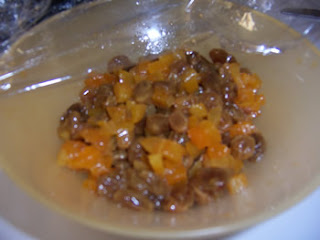
This bread really is easy and I'll tell you why.
I wanted to go visit a friend of mine today but I also wanted to get this bread baked. I decided I could do both with a little planning. I combined all of the ingredients using my stand mixer, then transferred the dough to a large bowl to rise. I went to visit my friend (who lives an hour away), with the bread rising in the bowl in the car. Once I got to his house, I put the bread in the loaf pans and let them rise for another hour and then baked the loaves. The bread turned out great! Believe me, my friend was only too happy to help test taste it. We ate it toasted with pear preserves! It was so good.
Whole Wheat Bread Recipe
Makes: 2 9-by-5-inch loaves
Adapted from Bread by Williams-Sonoma.
Ingredients:
- 1 1/2 tablespoons active dry yeast
- Pinch of brown sugar
- 1 cup warm water (105º - 115ºF)
- 1 1/2 cups tepid buttermilk (90ºF)
- 1/4 cup maple syrup, honey, or light molasses
- 1/4 cup canola oil, plus extra for greasing
- 1 tablespoon salt
- 3 cups freshly milled whole wheat flour from organic hard red winter wheat
- 1/2 – 3/4 cup organic white whole wheat milled from hard white spring wheat
- 3 cups bread flour
Directions:
Add the warm water to a small bowl and sprinkle the yeast and brown sugar over it. Stir to dissolve. Let the mixture stand until foamy, about 10 minutes.
In the bowl of a stand mixer, combine the buttermilk, maple syrup, oil, salt, and 2 cups of the whole wheat flour. Beat on low speed until creamy, about 1 minute.
Gradually add in the yeast mixture and the remaining whole wheat flour and beat for 1 minute. Add in the bread flour, 1/2 cup at a time, and mix until the dough pulls away from the bowl sides.
Transfer the dough to a lightly floured counter and knead it until it is smooth and slightly sticky. Or, knead the dough in the machine, about 5 minutes. Add in extra flour, 1 tablespoon at a time as necessary to form a workable dough.
Place the dough in a lightly oiled bowl and turn it to coat it with oil.
Cover the bowl with plastic wrap and let rise at room temperature until doubled in bulk, about 1 - 1 1/2 hours.
Lightly grease two loaf pans. Then transfer the dough to a lightly floured surface.
Divide in half and pat each piece into a long rectangle. Fold 1 rectangle like a letter, overlapping the short sides in the middle; press to flatten.
Bring the other end up and press again to flatten.
Beginning at the narrow end, tightly roll up the dough into a thick log.
Roll the log back and forth with your palms until it is the same length as the pan. Pinch the ends and the long seam to seal. Place the loaf, seam side down, in a prepared pan, tucking the ends under to make a neat, snug fit. Repeat with the second portion.
Cover with plastic again and let it rise until it is about 1 inch above the rim of each pan, about 1 hour.
Preheat the oven to 350ºF (180ºC). Bake until the loaves are golden brown and pull away from the pan sides, 35-40 minutes. Place the loaves on wire racks and let them cool completely.
 |  |
 |  |
 |  |
 |  |
There! That was easy! I hope you enjoy this bread as much as we did.
Happy Baking!
Cathy



























